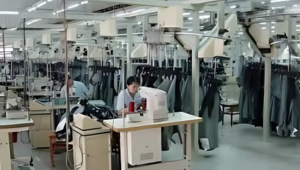Program Overview
This immersive program, delivered by an industry expert with 25+ years in global sourcing, merchandising, and apparel supply chain transformation, helps professionals navigate the speed-centric demands of fast fashion. Participants will unpack the differences between agility and efficiency, identify where traditional supply chains break down, and learn how successful brands like Zara, Shein, and Indian D2C labels are transforming supply chains through micro-batching, tiered sourcing, and nearshoring. Through simulation and tools such as the Agile Sourcing Matrix and Lead Time, each participant will leave with a practical strategy to improve responsiveness, reduce lead times, and meet dynamic buyer expectations.
Features
- Understand the key principles of agility in fast fashion and apparel supply chains
- Identify structural delays, rigidity, and risk in current sourcing and production models
- Learn actionable frameworks from global and Indian fast fashion supply chain leaders
- Identify and mitigate sourcing risks by creating flexible, diversified, and disruption-resilient supply chain models
Target audiences
- Sourcing Heads / Vendor Managers
- Supply Chain & Planning Managers
- Strategy & Operations Professionals
Curriculum
- 3 Sections
- 13 Lessons
- 1 Day
Expand all sectionsCollapse all sections
- Why Supply Chain Agility is the New Competitive Advantage5
- 1.1What is supply chain agility vs. efficiency?
- 1.2Speed-to-market as value: From Zara to Shein to Myntra Studios
- 1.3Key metrics: Lead time compression, OTIF (On-Time In-Full), MOQ flexibility
- 1.4Responsive replenishment, nearshoring, postponement, demand-driven supply chain
- 1.5Example: How an Indian private label achieved 30% faster collection drops with agile vendor partnerships
- Where Traditional Supply Chains Break Down3
- 2.1Root causes of sluggish supply chains in apparel: Long MOQ and fabric lead times Slow approvals and sampling loops Vendor over-reliance / lack of tiered sourcing Poor demand visibility
- 2.2Activity: Map current lead time structure (design to delivery)
- 2.3Real Case: Missed season opportunity due to rigid supply chain in a mid-tier fast fashion brand
- Global & Indian Agile Supply Chain Playbooks5
- 3.1Zara’s vertically integrated and tiered supply chain
- 3.2Shein’s micro-batch, AI-supported replenishment model
- 3.3Bestseller’s supplier agility via nearshoring + regional hubs
- 3.4Indian D2C brand playbook: small-lot drops + domestic agile production
- 3.5Simulation: The sourcing team of a fast fashion private label struggling to improve season responsiveness. Redesign sourcing model: fabric, vendor base, replenishment, logistics






